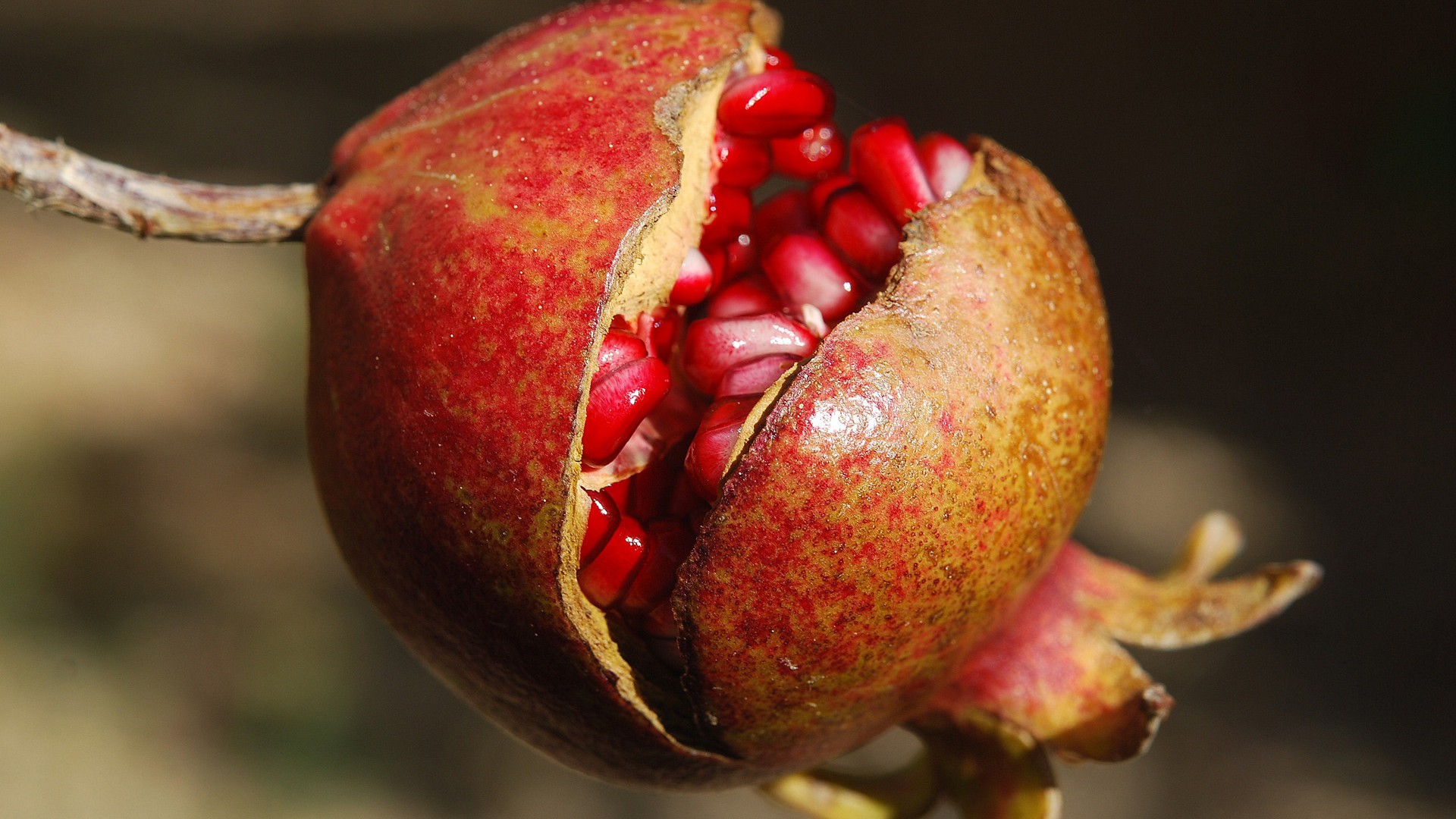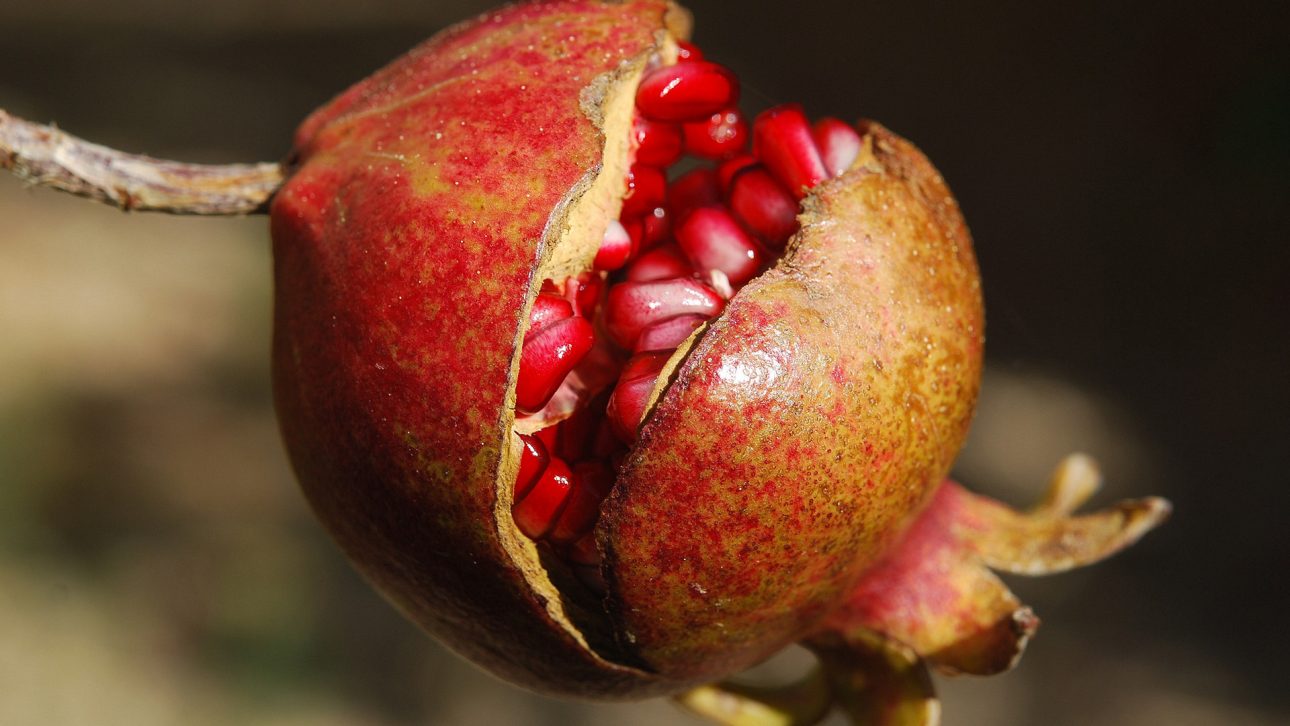
Cut it in half and whack the outer skin with a spoon to make all the seeds fall out!
Origin
Rich in history, the pomegranate is part of the Lythraceae family. It originated in Asia Minor, around Persia and Afghanistan. Historically known as the “Carthaginian apple,” it is now cultivated throughout the Mediterranean Basin, especially in Spain and Israel. Demand has been increasing even in large-scale retail channels in Italy, which is why initiatives dedicated to its cultivation, like the “Pomgrana” project in Puglia, have arisen. The pomegranate has been hailed as a superfood because of its high antioxidant content and cancer-preventing properties. The late-season variety known as Wonderful One is the most widespread, and is available from the end of October until March.
Cook it
The pomegranate is not just rich in antioxidants and cancer-fighting power, but it also boasts a fantastic sweet and zesty flavor. It makes an ideal accompaniment to both sweet and savory dishes, and its violet-red color makes it perfect for our fall tables. It’s also a must-have on Christmas menus. It’s great for making risotto and gelatin desserts, and it can be juiced to make as an anti-aging drink.
Did you know That?
The pomegranate is a symbol of fertility and prosperity in Dalmatia and in China, representing the female sex organ. Pomegranates were often depicted in 15th and 16th century paintings in the hands of the Christ child, to represent the new life he bestowed. They were also common decorative elements in the paintings of Piero della Francesca and Donatello.



